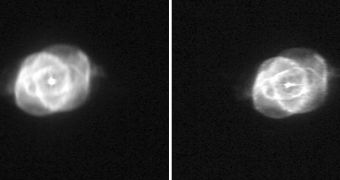Mission controllers at the European Space Agency (ESA) have just released a new series of images collected by their recently-launched Gaia space telescope. The billion star surveyor is currently being calibrated and commissioned in the L2 Lagrangian orbital point.
Gaia launched into space aboard a Soyuz ST-B delivery system featuring a Fregat-MT upper stage, from a dedicated launch pad at the ESA Kourou Spaceport, in French Guiana, South America. Takeoff occurred at 09:12 UTC, on December 19, 2013.
Recently, the spacecraft made its way to its final orbital perch, and began circling the L2 point. The latter is located around 1.5 million kilometers (930,000 miles) away from Earth, beyond the orbit of the Moon. From this location, Gaia can shield its detectors from incoming sunlight.
In the meantime, experts at ESA have worked tirelessly to commission the main observations equipment aboard the spacecraft. Gaia's mission is to map the locations, directions and physical traits of more than 1 billion stars in the Milky Way, in order to create a 3D map of the galaxy.
Ironically, the telescope will not be sending photos back to Earth once it completes its commissioning and testing phases. The astrometry mission will simply send back data on each of the billion stars it will survey, and researchers will then centralize this information into models here on Earth.
Photographs such as the one seen here depicting the Cat's Eye Nebula are only snapped so that scientists can analyze how the telescope is oriented, and if its cameras work properly. These test images are, in effect, the last photos Gaia will ever send to Earth.
The two images of the Cat's Eye Nebula were collected on January 23 and January 25, 2014, respectively. They “show the effect of the spin rate on the quality of an image. Due to the non-optimized spin rate, the image on the left is quite blurry,” ESA scientists said in a recent blog post.
“In the coming weeks, the commissioning team will further synchronize the spin rate so that it will reach an optimum compatibility with the focal length and master-clock period,” they added, quoted by Universe Today.

 14 DAY TRIAL //
14 DAY TRIAL //